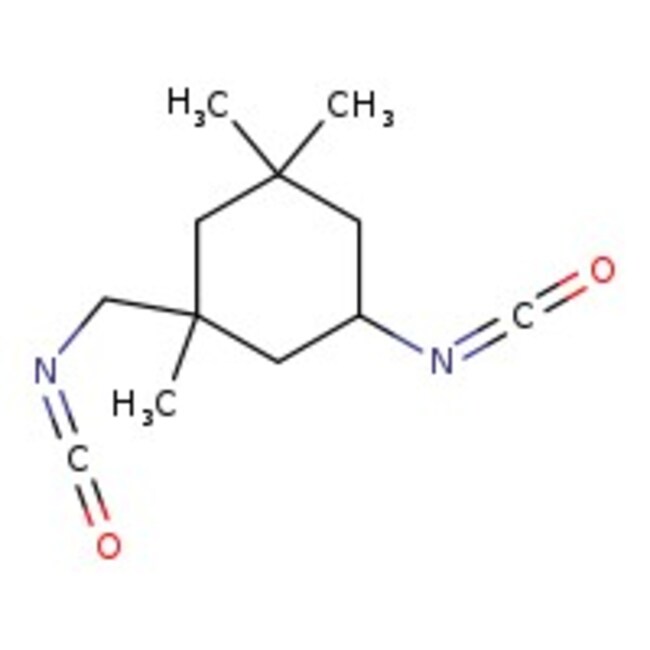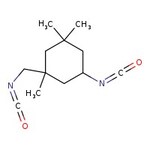Search Thermo Fisher Scientific
Isophorone diisocyanate, mixture of isomers, 98%, Thermo Scientific Chemicals



Isophorone diisocyanate, mixture of isomers, 98%, Thermo Scientific Chemicals
Chemical Identifiers
Specifications
Description
This Thermo Scientific Chemicals brand product was originally part of the Alfa Aesar product portfolio. Some documentation and label information may refer to the legacy brand. The original Alfa Aesar product / item code or SKU reference has not changed as a part of the brand transition to Thermo Scientific Chemicals.
Isophorone diisocyanate is useful for the preparation of polyurethane plastics. It is also used to make polyurethane coatings and in enamel coatings, which are resistant to abrasion and degradation from ultraviolet light. Further, it is used as coatings for automotive, flooring and roofing as well as paint applied to aircraft.
Solubility
Miscible with esters, ketones, ethers, and aromatic and aliphatic hydrocarbons.
Notes
Moisture sensitive. Incompatible with strong oxidizing agents, strong acids and alcohols.
Figures
Documents & Downloads
Certificates
Frequently asked questions (FAQs)
Citations & References
Safety and Handling
Classification of the substance or mixture
CLP classification - Regulation(EC) No 1272/2008
Label Elements
Signal Word
Danger
Hazard Statements
H315 - Causes skin irritation
H317 - May cause an allergic skin reaction
H319 - Causes serious eye irritation
H330 - Fatal if inhaled
H334 - May cause allergy or asthma symptoms or breathing difficulties if inhaled
H335 - May cause respiratory irritation
H411 - Toxic to aquatic life with long lasting effects
Precautionary Statements
P280 - Wear protective gloves/protective clothing/eye protection/face protection
P302 + P352 - IF ON SKIN: Wash with plenty of soap and water
P304 + P340 - IF INHALED: Remove person to fresh air and keep comfortable for breathing
P332 + P313 - If skin irritation occurs: Get medical advice/attention
P333 + P313 - If skin irritation or rash occurs: Get medical advice/attention
P337 + P313 - If eye irritation persists: Get medical advice/attention